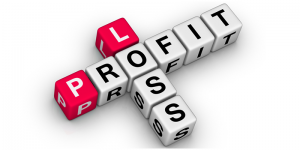As an accounting concept, the “Profit and Loss Statement (P&L)” of a business is not understood by every common man. However, it is not very difficult to grasp the idea once you get into the terminology. Moreover, if you are an entrepreneur and you are applying for a small business loan, you not only need to know what a P&L statement is but also submit one while applying for funding.
In simple terms, one could define the profit and loss statement (P&L), or, in other words, the income statement, as a financial report of the performance of a business.
The report, which could be monthly, quarterly, or yearly, records every revenue and expense that took place during a specific period. Given the nature and size of a business—how many people are involved in production and distribution, etc.—the P&L statement could be very simple or quite complex.
The Importance Profit and Loss Statements Carry
P&Ls are important. Because of their requirements from a legal perspective. And they give you a chance to check the status of your business in a unique way. Before adding new objectives to the expansion of your firm, these are handy documents to guide you.
Some Important Terms Linked with P&L Statements
Revenue- revenue is the total sum of the sales of- your business products, the value generated by selling assets and appliances, and tax refunds (if any). That means it accounts for every form of the inward flow of earned money into the business.
Expenditures- The expenditure section in the statement not only talks about the total expenditure- various ways of spending money– but reveals every single detail about specified expenditures. This is very important since it is difficult to remember every minute spent.
COGS- The full form of COGS is “cost of goods sold”. This cost is not the price which a product was sold at. This cost implies the cost of raw material used to prepare the product, the expertise invested and the time spent.
OPEX- OPEX is the short form of operational expenditures. Apart from COGS, there are other forms of expenditures involved with the production. The cost of manpower, transport, skill building, technology, and marketing etc. could be major expenditures. The size of the business affects these costs.
Depreciation- Depreciation is the loss of value of an asset over time by default. For example, if you buy a new bike and sell it after a week, no matter how the condition is, you have to sell at a lower price than you purchased. The appliances used in production, the machinery etc. also lose value over time. This is also considered as one type of loss.
Profit- Profit is one of the main segments of the revenue statement. Calculating profit is very simple; total revenue minus total expenditure. Although it looks simple from outside, the information could give you many types of profits through different fronts. Which product achieved the most profit and which one did not, can also be verified in the profit section.
Gross Profit- Gross profit is equal to revenue minus cost of goods sold. Gross profit decides how much can be spent on human capital, utilities, and other expenses. It might help the business grow and expand.
EBIT- EBIT (earnings before interest and tax) is the remaining value after subtracting OPEX and COGS from the total earnings made by the firm. At this point, we have not calculated the interests or tax reductions, and it is important to note. That gives a clear picture of the performance of the business as a whole.
EBITDA- Earning before interest, tax, depreciation and amortization (EBITDA) helps measure the profitability of a business. It deals with the non-cash elements of the production, and that is why this section is not treated as important as the profit section for example.
With a clear idea about these concepts if one approaches the profit and loss statement, it would be a far more comprehensible document to go through. It is well advisable for business owners to read their business’s P&L statement to remain rooted in the reality of their own performance; before any decision on the business.

